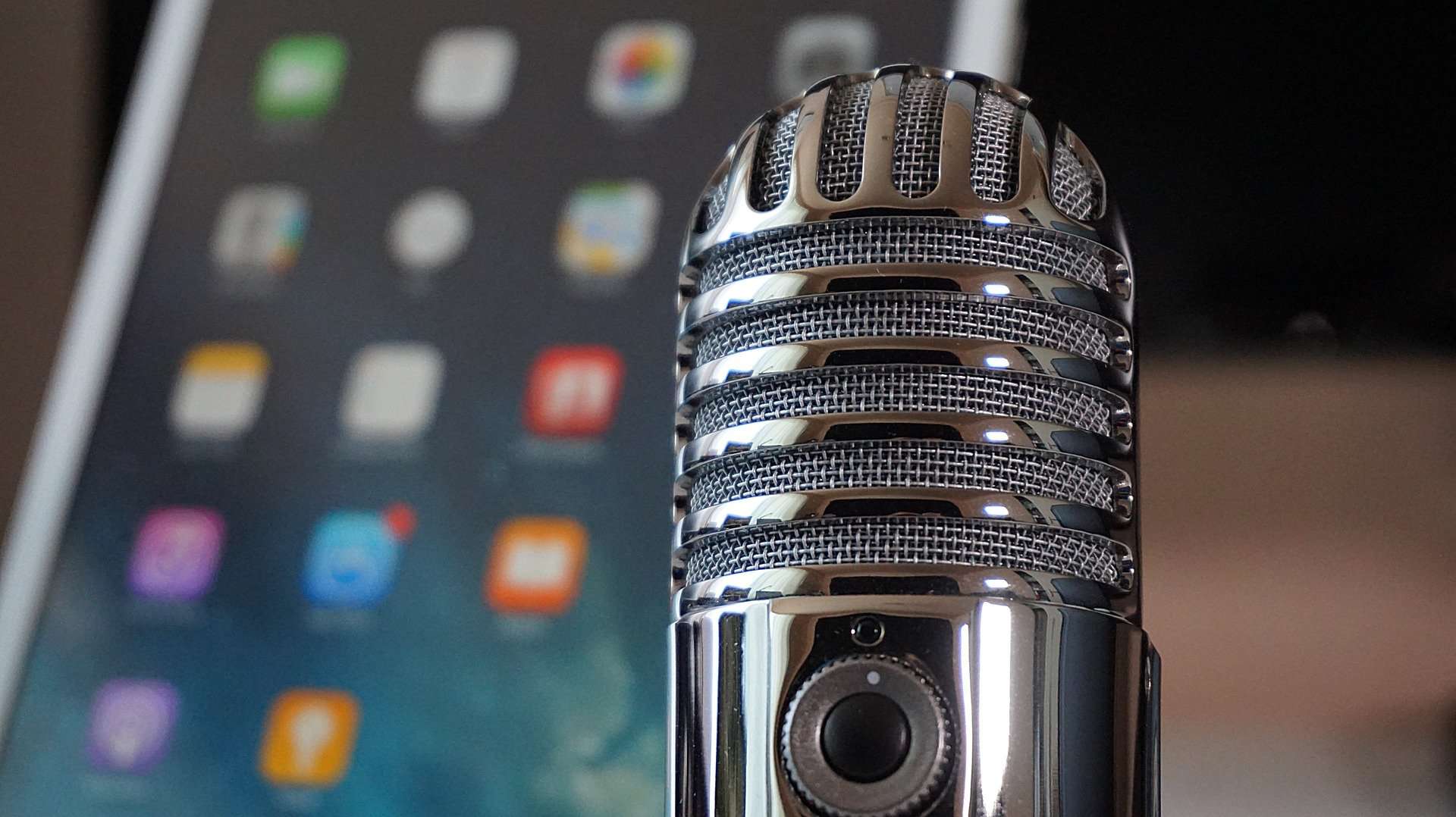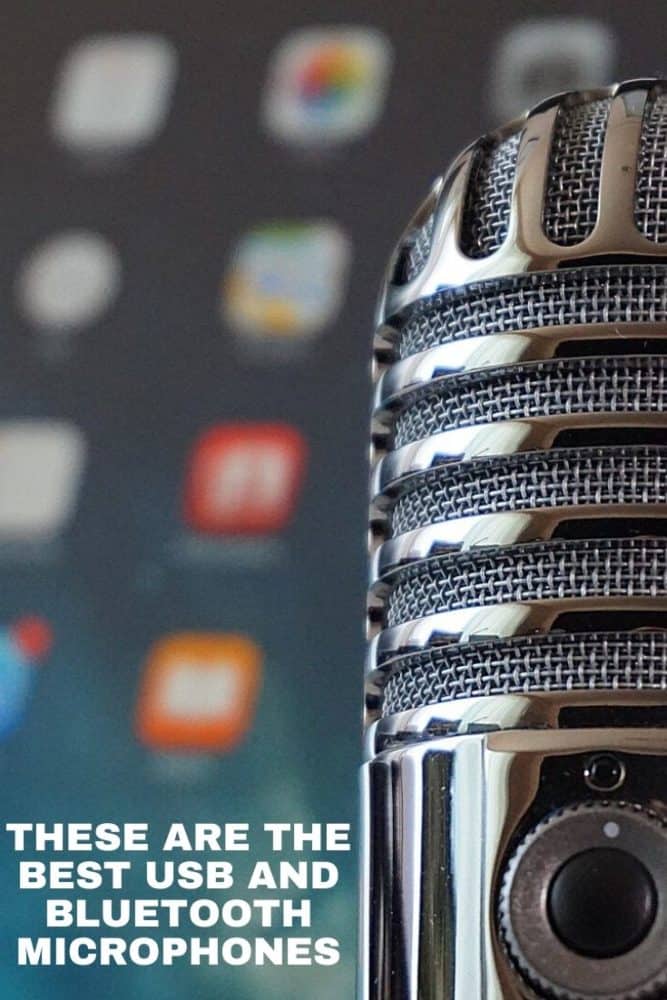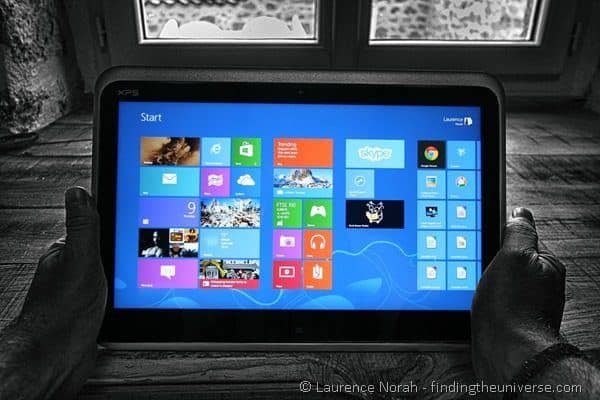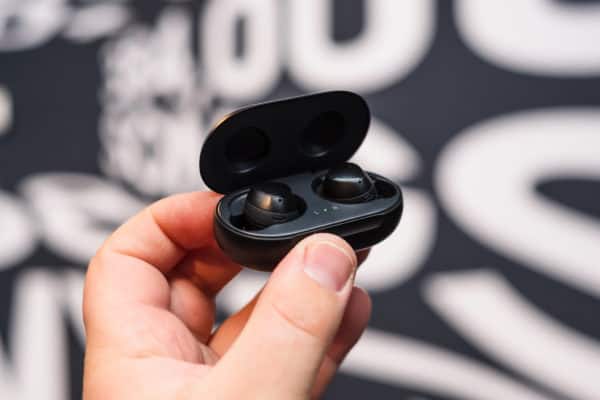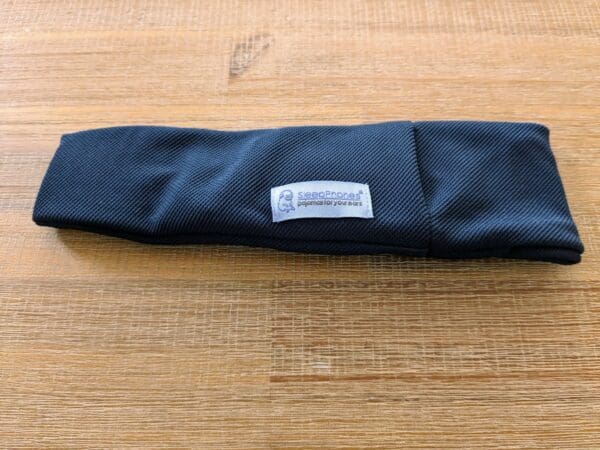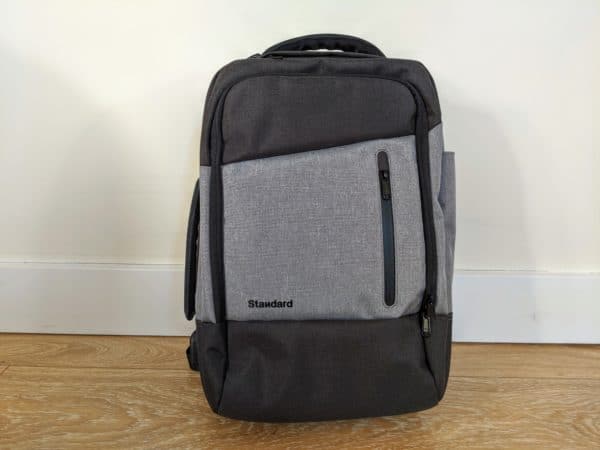The Best USB and Bluetooth Microphones in 2023
We may earn a commission from purchases you make after clicking links on this site. Learn more.If you regularly find yourself having meetings or job interviews online, you may have noticed the sound quality from other people on the call isn’t great. Don’t worry, they’re probably thinking the same thing about you.
That’s because the inbuilt microphones on most laptops, tablets, and phones tend to be quite low-quality, and not good at separating your voice from background noise. This makes it harder for other people to hear what you’re saying, resulting in confusing conversations and poor-quality recordings.
Repeating yourself and asking others to do the same is tiring and frustrating, but there are solutions. A good external USB or Bluetooth microphone will improve voice quality and reduce echo and background noise, making for better work calls, video chats, and podcast audio.
USB and Bluetooth microphones are available in a range of prices and capabilities, so I’ve pulled together my favorites based on quality, cost, features, and portability. While spending more money usually means higher quality and extra features, there are still some budget models worth buying.
What to Consider When Choosing a USB or Bluetooth Microphone
Cardioid vs. Bidirectional vs. Omnidirectional vs. Stereo
There are four ways microphones capture sound, also known as their pickup pattern.
Cardioid mics are designed to capture sound in front of the microphone and ignore anything coming in from elsewhere. This type of mic is ideal for use while you’re live-streaming a video game, for example, or when you’re recording somewhere with a lot of background noise.
Bidirectional mics capture the sound in front of and behind the microphone, but not from the sides. This sort of microphone is perfect for conducting a one-on-one interview.
Omnidirectional mics pick up sound in a 360° pattern, meaning they capture sound around the mic equally in every direction. If you’re on a conference call with several people in the same room, an omnidirectional mic will make sure everyone is heard.
Stereo mics have two in-built microphones and pick up sound in the same way our own ears do (from the left and right). This gives sound more complexity, making it the best option for recording music.
Higher-end mics often have multiple pickup patterns so you can choose how you’d like to capture sound. Other mics are explicitly designed for one purpose. Think about how you will use your mic before you buy, to ensure it will suit your audio needs.
Does It Have a Mute Button?
If you’re using your mic on conference calls, quick-access mute and volume controls are very useful. When your dog starts to bark or baby starts crying in the middle of a Zoom meeting, you’ll want to mute yourself as quickly as possible.
Look for a mic with dedicated controls so you can easily adjust the volume or mute your mic when the need arises. It’s much faster than scrambling for the volume control on your laptop or phone.
Is It Compatible With Your Devices?
What devices do you plan on using your mic with? Many professional-grade microphones use a circular XLR connector, but these won’t plug directly into your phone or laptop.
You’ll likely need an adapter if you choose a mic that isn’t USB or Bluetooth-compatible, and as you might have guessed, we’re really not fans of having too many adapters. As a result, all the mics I’ve suggested below use either USB or Bluetooth.
There are microphones built specifically for smartphones, or you can choose a Bluetooth version. Wireless microphones like these rarely have the same sound quality as corded versions, but on the upside, you can pair them with any Bluetooth-compatible device without worrying whether you have the right cable.
Best USB Microphone for Most People: Blue Yeti
- Connectivity: USB
- Pickup type: Multiple
- Headphone jack: Yes
- Mute button: Yes
- Volume control: Yes
My top USB microphone pick at the moment is the Blue Yeti. It’s been a popular model for over a decade, combing a stylish design with multiple pickup pattern selection (cardioid, bidirectional, omnidirectional, and stereo) and easy-access volume and mute controls.
The zero-latency headphone jack is ideal for monitoring your audio levels in real-time, and you can even pick your favorite color and shade from the half-dozen combinations available.
Setup is straightforward, requiring little more than plugging the cable into an available USB-A socket and waiting a few seconds for the drivers to install. You can easily adjust the mic to whatever angle you prefer simply by pivoting it on the integrated desk stand.
It’s super-sensitive, with clean, crisp, professional-sounding audio whether you’re recording voice or vocals. That sensitivity does make it prone to picking up vibrations, however, so you may end up investing in a shock mount or boom arm depending on your recording environment.
If you do need to do it, switching mounts is as easy as unscrewing the knobs on each side, removing the mic from the desk stand, and screwing the knobs back into the new mount.
This is a top-quality USB microphone that’s impressed me for years, and is easy to recommend for most general voice recording and streaming needs. When my nephew recently requested a high-end mic for his birthday appropriate for Discord chats and YouTube recording, this is the exact model I bought him.
The only real downside of the Blue Yeti is its size: it’s definitely designed to mostly stay on your desk rather than being used for recording on the go. If you need something smaller (and cheaper), take a look at the Blue Yeti Nano: it’s not as robust and the audio quality isn’t quite as high, but it’s much easier to drop in your bag.
Pros
- Quality mic at a reasonable price
- Multiple pickup options
- Tried and tested for over a decade
- Available in multiple colors
Cons
- Relatively large: it’s a desk mic, not a travel mic
Best Budget USB Microphone: Fifine K669
- Connectivity: USB
- Pickup type: Cardioid
- Headphone jack: No
- Mute button: Yes
- Volume control: Yes
Looking for a budget option? Fifine’s K669 USB microphone is anywhere from half to a quarter of the price of most top mic brands, yet does a surprisingly good job. If you’re just after a good cheap mic and don’t need high-end features, this is the one to go for.
It has a cardioid pickup pattern, designed to pull in sound only from in front of the microphone. This makes it better for recording yourself in noisy environments, and in other single-person recording situations where all of the sound you care about is coming from one direction.
The mic has a metal exterior and integrated six-foot USB cable, and there’s a small tripod stand in the box to hold and adjust the angle of the mic. You can also use it with a boom arm, or any other tripod or mount with a 5/8″ screw.
The volume knob on the front doubles as a mute button, so you can quickly block all incoming sound when you need to. As with most cardioid microphones, you’ll get best results when placing it close to your mouth: around six inches seems to be the sweet spot.
Audio quality is good for the price, making this the ideal option if you’re on a budget or don’t want to break the bank paying for a microphone. Available in a range of colors, it’s also a good way of seeing if an external mic is for you before investing in a more expensive model.
Pros
- Inexpensive
- Good audio quality for the money
- Mute button
- Available in several colors
Cons
- Needs to be within about six inches of your mouth for best results
Best Portable USB Microphone: Samson Go
- Connectivity: USB
- Pickup type: Cardioid, omnidirectional
- Headphone jack: Yes
- Mute button: No
- Volume control: No
The Samson Go is a portable USB condenser microphone designed for recording on-the-go. This fold-up mic has dual pickup patterns (cardioid and omnidirectional) and a built-in headphone amplifier and socket, yet remains small enough to fit in your pocket or day bag.
Weighing just 3.5 ounces and coming with a soft pouch to protect from knocks and scrapes, it’s ideal for anyone who likes to travel light but needs better audio than they’ll get from the inbuilt mic in their phone or laptop.
The Go’s desk stand doubles as a clip that you can attach to the top of most laptop screens, making it easy to use for video calls or any other situation where you’re sitting in front of your computer. A zero-latency headphone jack lets you monitor recording levels and audio quality in real time, but there’s no volume control or mute button.
Given that it’s likely to be kept in a day bag and moved around from place to place, the inclusion of a hard travel case is very welcome. Even so, as with anything designed or used for travel, I’d have preferred a metal exterior over cheap-feeling plastic for a bit of extra durability.
It’s very reasonably priced, so like my budget pick above, it’s a good option if you’re looking to test out a low-cost microphone before making a larger investment. It’s worth spending the extra few dollars on the bundle with a wind screen, to cut down on noise when recording outside.
Pros
- Inexpensive
- Very portable
- Desk stand doubles as a mounting clip for laptop screens
- Headphone jack
- Comes with a hard travel case
Cons
- Plastic case feels cheap and isn’t particularly durable
- No volume control or mute button
Best USB Microphone For Podcasting: RØDE NT-USB Mini
- Connectivity: USB
- Pickup type: Cardiod
- Headphone jack: Yes
- Mute button: No
- Volume control: Yes
RØDE is renowned for its high-quality podcasting microphones, and the NT-USB Mini is no exception. It’s a compact, high-quality option designed for recording directly to a computer or tablet via the USB C output.
This cardioid mic has extra features like an internal pop filter to minimize plosives (words that start with a t, k, or p sound), helping you sound more professional in podcasts, interviews, and Zoom calls, and a desk stand with a magnetic base that helps it stay firmly attached to metal surfaces.
As with other cardioid mics, you’ll get the best results with the microphone positioned roughly 4-6″ from your mouth. To that end, you can also remove the mic from the desk stand entirely, and mount it on a studio arm or different type of stand as needed.
RØDE sells high-quality versions of both, but the microphone uses a standard 3/8″ screw if you want to use mounts from a different manufacturer.
There’s an inbuilt studio-grade headphone amplifier, and a volume control dial to control the headphone output level. It can be switched between zero-latency and standard audio mode just by pressing the dial. There’s no mute button, however, which seems a surprising omission.
Pros
- High-quality audio
- Inbuilt pop filter
- Desk stand with magnetic base
- Switchable zero-latency/standard headphone jack
Cons
- No mute button
Best Microphone For iPhone: Shure MV88
- Connectivity: Lightning
- Pickup type: Stereo
- Headphone jack: No (but can be monitored via Bluetooth)
- Mute button: No
- Volume control: No
The Shure MV88 connects directly to any iOS device with a Lightning port. It’s not technically a USB microphone, but in this case, that’s a good thing: an adapter isn’t needed for use with an iPhone, which means one less thing to carry or lose when recording audio on the go.
The small bundled carry case protects the mic in transit, so you’ll have few concerns about tossing it into a backpack or purse. The microphone portion rotates 90 degrees so you can aim it in whatever direction you need, while the detachable foam screen reduces wind noise when recording outside.
Audio quality is genuinely impressive, especially from such a small microphone. Voices and vocals sound crisp and rich, and there’s no reason you couldn’t use this to record music (amplified or otherwise) as well. Stereo recording is built in and works well, but you can easily switch it to mono whenever necessary.
There’s no volume control or mute button, so you’ll need to manage those settings on your phone. There isn’t a headphone jack either, although you can use Bluetooth headphones or earbuds. It’s definitely not a zero-latency option, but at least lets you check the volume levels and general audio quality.
Shure has a deserved reputation for quality when it comes to microphones and other audio equipment, and I’ve used the company’s equipment for years. Combine that with the all-metal construction, impressive stereo sound capture, and two-year warranty, the MV88 is the obvious pick for iPhone owners.
Pros
- High-quality stereo recording
- Good wind-handling abilities
- Rugged, and comes with a carry case
- Small and light
Cons
- Only works with iOS
- No volume control or mute button
- No headphone jack (although you can use Bluetooth headphones)
Best Microphone for Android Phones: Shure MV88+
- Connectivity: Lightning
- Pickup type: Stereo
- Headphone jack: No (but can be monitored via Bluetooth)
- Mute button: No
- Volume control: No
If you like the sound of the MV88 mentioned above but want something that works with more devices, check out the MV88+ instead. This upgraded (and more expensive) version is easily the best option I’ve come across for Android phones, and works with iOS, Windows, and macOS as well.
You’ll get all the benefits of the original model’s small size, high-quality stereo capture, and durable construction, along with genuine extra benefits like a headphone jack, pass-through charging, and livestreaming support.
The design has been tweaked as well, swapping out the comparatively large base on the MV88 for standard USB cables and a tripod mount. This means you’ll likely be able to leave your phone in its case when using the MV88+, rather than having to remove it each time.
It’s definitely worth installing Shure’s accompanying Motiv app when using this mic, since it lets you tweak a variety of settings that are otherwise inaccessible. As with the MV88, directional recording, equalization, and even a limiter and high-pass filter are all available within the app.
Be sure to buy the video kit bundle of this microphone: as well as the right cables and mounts for use with phones, it also comes with a quality Manfrotto tripod in the box.
Pros
- Compatible with Android, iOS, and desktop operating systems
- High-quality stereo recording
- Headphone jack
- Powerful and useful app
- Pass-through charging
Cons
- Relatively expensive
Best Bluetooth Mic for Live Streaming: Razer Seiren BT
- Connectivity: Bluetooth
- Pickup type: Omnidirectional
- Headphone jack: Yes
- Mute button: No
- Volume control: No
Accessory manufacturer Razer has recently been branching out beyond its gaming roots, and the company’s Seiren BT microphone is a good example. Aimed squarely at live streamers, this small, light lav mic is a great option if Twitch, Instagram Live, and other on-the-go streaming apps are a core part of your day.
Weighing in at 14.5g (half an ounce), the rectangular casing is designed to be clipped onto your shirt. A fairly plain affair, there’s a power/pairing button on the side and a handy headphone jack on the top for use with wired headphones to check your recording levels and sound quality.
There’s also a USB C charging port on the bottom, and you can expect up to around six hours of battery life from a single charge. That’s pretty good for a device this size, and once you’ve drained it to empty, a full charge takes about 90 minutes.
There are a pair of windsocks in the box that you can use to help cut breath and wind noise: a fairly typical foam one intended for indoors, and a fur-covered version for outdoors. Weirdly, Razer’s choice of location for the 3.5mm jack means you have to choose between using headphones or a windsock. Surely there was a better option?
Buy on AmazonAudio quality is reasonable, not exceptional: there’s a bit too much audible compression for my liking. That said, it’s more acceptable in some situations than others, and helps explain Razer’s focus on the live streaming market with this microphone.
The other reason it looks to that market is a practical one: you can use apps like Streamlabs with popular streaming services, and it has proper Bluetooth microphone support. The native camera apps on both iOS and Android don’t support Bluetooth mics, which makes the Seiren BT less useful for offline video work.
Where the microphone really does shine, however, is the quality of its noise reduction software. Even in busy outdoor environments, the AI noise reduction works remarkably well, removing almost all background noise and focusing on just your voice.
This is a somewhat specialized mic, and won’t be ideal for everyone. If you regularly live-stream, however, especially outside or in other loud settings, you’re unlikely to find a better Bluetooth option right now.
Pros
- Lightweight for lapel use
- Headphone jack
- Decent battery life
- Excellent noise reduction
Cons
- Audio quality only ok, with noticeable compression
Get regular updates from the world of travel tech and remote work
News, reviews, recommendations and more, from here and around the web
Best Bluetooth Speakerphone: Anker PowerConf S500
- Connectivity: Bluetooth, USB
- Pickup type: Omnidirectional
- Headphone jack: Yes
- Mute button: Yes
- Volume control: Yes
If you’re on a lot of conference calls and looking for a good cordless, hands-free speakerphone, check out the Anker PowerConf S500. Even though it’s designed for meetings with multiple people in the room, it’s a reliable and reasonably affordable personal mic and speaker combo as well.
It has four HD microphones spread around the perimeter, letting it detect and focus on sound from any direction. The noise reduction tech works remarkably well, removing background noise on both ends of the conversation, and letting you take calls even in relatively noisy environments.
Despite the somewhat goofy name, the “VoiceRadar” feature does a good job of honing in on whoever is speaking, balancing sound levels to account for differences in both volume and distance. You can pair two of these devices together for larger rooms; if you need even more than that, Anker also sells an upgraded SR500 version.
The S500 has quick-touch controls to answer calls, mute, or manage volume as needed. It’s a hardware mute, so won’t show up on your (for example) Zoom screen, but there’s a large LED on the front that changes color when the mics are disabled.
It has up to 16 hours of battery life, and you can also use it as a standard Bluetooth speaker. Don’t underestimate its ability there, either: while blasting your favorite tunes from a speakerphone might seem odd, the 10W speaker sounds surprisingly good when you get over the embarrassment.
While the S500 is marketed and commonly used as a Bluetooth speakerphone, that’s not the only connection option. You can also hook it up to a laptop or other device via a USB C cable. There’s one in the box, along with a protective case.
If you’d prefer to use Bluetooth but the computer you’re connecting it to doesn’t support it (many desktop Windows machines don’t), never fear: there’s also USB Bluetooth adapter tucked away on the underside of the S500. Just prise it out, plug it in, wait a minute for the drivers to install, and you’re good to go.
Pros
- Impressive mic and speaker quality
- Wired and wireless connection
- Good noise-cancelling on both ends of the call
- Bundled with a Bluetooth adapter
- Good battery life
Cons
- Somewhat expensive
Main image via Csaba Nagy, product images via Amazon

